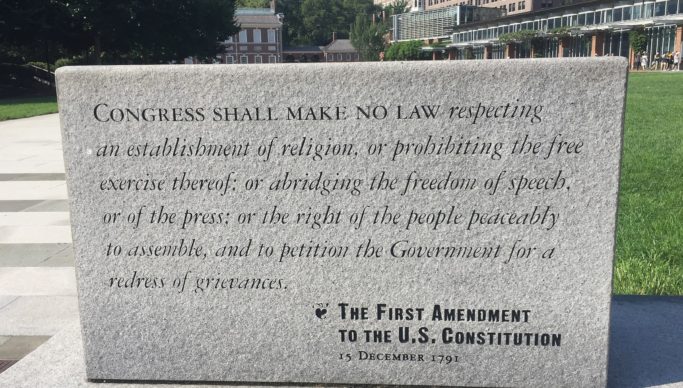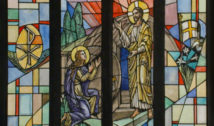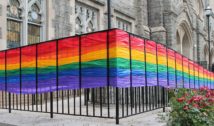
Separation of Church and State In America? No Problem!—Unless…
- By Deirdre Pelphrey --
- 21 Sep 2022 --
At the Bangor Christian School in Maine ninth-graders are taught to “refute the teachings of the Islamic religion with the truth of God’s Word.” To work at the school, a teacher must affirm that “he/she is a ‘Born Again’ Christian who knows the Lord Jesus Christ as Savior,” and “must be an active, tithing member of a Bible believing church.”
Similarly, at Maine’s Temple Academy, teachers sign a contract acknowledging that “God recognize[s] homosexuals and other deviants as perverted” and that “deviation from Scriptural standards is grounds for termination.” Temple will not admit children who identify as gay or who come “from homes with serious differences with the school’s biblical basis.”
Putting aside any opinion of the schools’ teachings one way or the other, there are many taxpayers who might feel uncomfortable paying for schools whose moral vision differs from their own, and which, as school policy, will only allow those who follow a certain religion’s teachings in their employ. Yet that is what the Supreme Court has ruled in this summer’s Carson v. Makin decision. Maine must use its public education taxpayer-funded monies to support an inculcation of a world and moral view of one religion.
The Supreme Court has banged the gavel, but as in many such delicate cases involving the present and future of so many, the jury is still out in the court of public opinion. Is freedom of religion in better shape than ever? Has the wall of separation between Church and State remained sharp and crisp?
Separation of Church and State expert Charles Haynes, for one, doesn’t know what to do now. Haynes, who, according to the Washington Post, “literally wrote the book on the topic for the U.S. Department of Education along with partners as diverse as the National Association of Evangelicals and the American Civil Liberties Union,” frets that decisions such as Carson v. Makin and the widely publicized Kennedy v. Bremerton School District decision wherein the high court found in favor of a football coach praying on the 50-yard line on a public, taxpayer-funded high school football field, shrink the line between government and religion to an almost unrecognizable blur.
“What am I supposed to say now? What do I say?…We’re now at the point where you wonder if there is any Establishment Clause left,” Haynes said of the first 10 words of the First Amendment that bars laws “establishing” religion.
With America becoming more diverse by the day the perception of many is that the Supreme Court has indeed opened the door. But to what? To further recognition of the needs of all religions, not just one? Shall we now see devout Muslims unfurl their prayer rugs on high school football fields? Will Orthodox Hebrew schools now be fully funded by state revenue? Or will it be, as critics point out, just another excuse to intimidate and harass minority students who don’t go along with the crowd—as in the West Virginia high school earlier this year wherein a Jewish boy was compelled to attend a Christian prayer assembly against his will? His mother said, “I’m not knocking their faith, but there’s a time and place for everything—and in public schools, during the school day, is not the time and place.”
It has been a hot summer indeed with reactions to the high court’s decisions ranging from the Anti-Defamation League’s (ADL) sharp denunciation, “The Court’s see-no-evil approach to the coach’s prayer will encourage those who seek to proselytize within the public schools to do so with the Court’s blessing;” to the U.S. Conference of Catholic Bishops’ exultant, “This is a historic day in the life of our country, one that stirs our thoughts, emotions and prayers.”
The debate over how far is too far regarding state and church has been with us as long as the Republic. In 1785 in a rebuttal against a bill strikingly similar to Carson v. Makin which would have allocated state funds to a Christian school and therefore could have been construed as favoritism or sponsorship of that religion, Founding Father James Madison authored a passionate “Memorial and Remonstrance Against Religious Assessment,” which states in part regarding freedom of religion: “This right is in its nature an unalienable right. It is unalienable, because the opinions of men, depending only on the evidence contemplated by their own minds cannot follow the dictates of other men: It is unalienable also, because what is here a right towards men, is a duty towards the Creator.”
Thanks to the agitation of James Madison and his friend, Thomas Jefferson, the bill never got ratified and the law never got passed.
Jefferson penned the Virginia Statute for Religious Freedom in 1777, and coined the phrase “wall of separation between church and state” in an 1802 letter to the Danbury Baptist Association as a concise explanation of freedom of religion.
Are the foundations of that wall as strong as ever? Do they still guarantee true freedom of religion for all religions—minority, majority, and everything in between?
It depends on who’s speaking. Rep. Lauren Boebert (R-Colo) addressing a religious service in Colorado, said, “The church is supposed to direct the government. The government is not supposed to direct the church. That is not how our Founding Fathers intended it. I’m tired of this separation of church and state junk that’s not in the Constitution. It was in a stinking letter and it means nothing like what they say it does.”
Historically, the statesmen and lawmakers of our land have been unanimous in agreement, at least in principle, that state-sponsored religion is a bad and dangerous idea, harmful to religion itself which should be supported by its membership, governed by its own codes and doctrine and completely free from any government interference, including economic. As Benjamin Franklin commented, “When a Religion is good, I conceive that it will support itself; and when it cannot support itself, and God does not take care to support, so that its Professors are oblig’d to call for the help of the Civil Power, ’tis a Sign, I apprehend, of its being a bad one.”



















